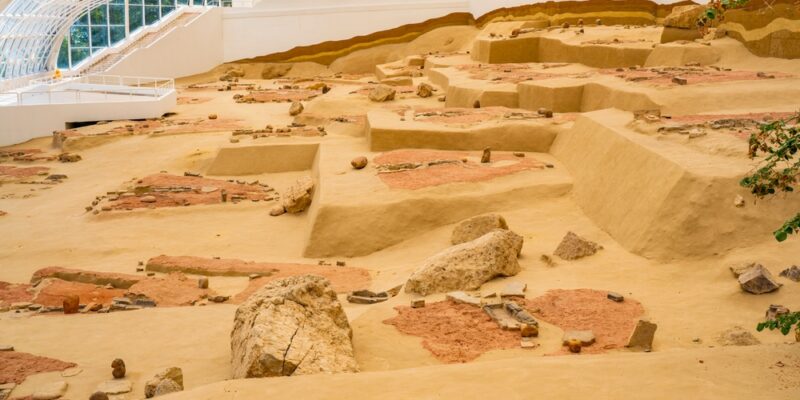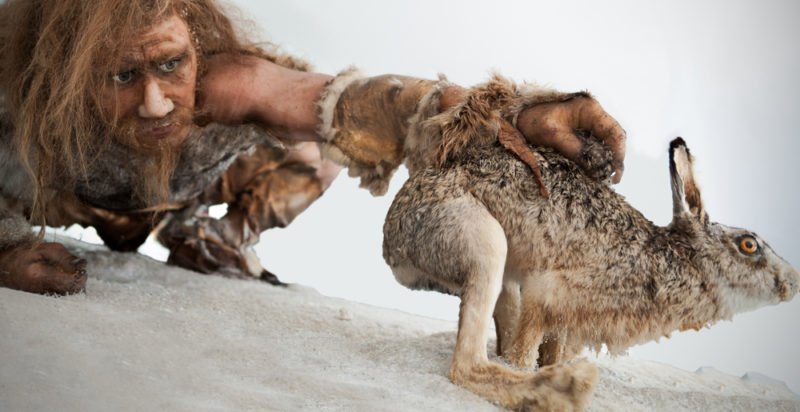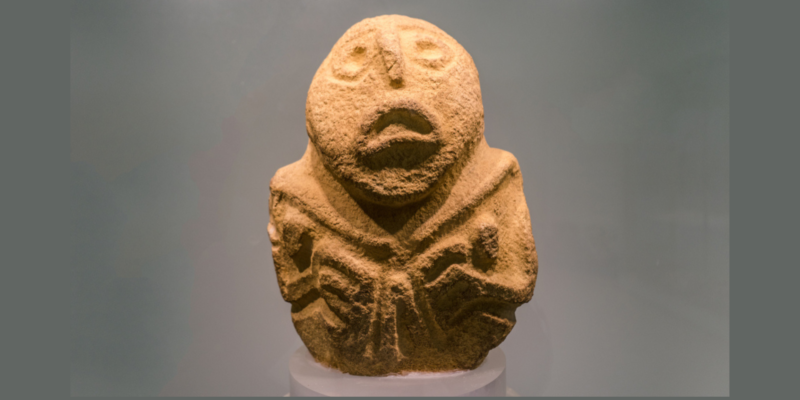We explain what the Mesolithic is, its importance, and characteristics. In addition, we explore the climatic changes that took place during this period.

What is the Mesolithic?
The Mesolithic was a prehistoric period that spanned the transition between the Paleolithic and Neolithic periods. These three periods together comprised the Stone Age.
The term Mesolithic comes from the Greek meso meaning "between" and lithos meaning "stone", thus referring to the "Middle Stone Age".
This period appears in the study of prehistoric societies that underwent changes in their organization and marked a transition from a predatory to a production-based economy. It spans roughly 10,000 to 6,000 BC, though periodization varies according to the culture under consideration.
During the Mesolithic, societies were characterized by the improvement of stone carving techniques, both polished and chipped. In addition, the earliest evidence of population settlements and funerary rituals in which traits of social differentiation can be observed date from this period.
- See also: Stone Age
Use of the term Mesolithic
The term Mesolithic (meaning "middle stone") is used by some archaeologists to refer to an intermediate period between the Paleolithic ("old stone") and the Neolithic ("new stone"). This subclassification of the classical periodization of the "Stone Age" incorporates the idea that the production economy of Neolithic societies was already underway at a preliminary stage.
The Mesolithic period can be observed in prehistoric cultures of Europe, the African Sahara, the Indochinese Peninsula, and in some American cultures. Other specialists prefer to use other culture-specific terms to refer to the same transition process. For example, for studies of American prehistory, the name "Archaic Period" is often used.
There were some prehistoric cultures that did not themselves drive the economic changes leading to food production and later sedentism. These cultures developed agriculture at a later time and as a consequence of contact with other peasant groups. For these societies, the term "Epipaleolithic" is used.
Characteristics of the Mesolithic
The Mesolithic period was characterized by:
- Transition. It was a transformation period from the hunter-gatherers of the Paleolithic to the farmers of the Neolithic.
- Stone carving. Innovations in stone carving stood out, such as polishing and elaborate carving, also known as microlith, which involves the use of a stone about one centimeter in length carved in an elaborate way making a blade on one of its sides.
- Sedentary way of life. The earliest evidence of the construction of buildings and settlements date back to this period.
- Funerary rites. The first traces of grave goods, belonging to individuals with power or high social status, also come from these societies. The bodies of the deceased were buried with offerings or valuable personal accessories, which suggests that spiritual ceremonies or rituals were practiced.
- Painting. While rock art existed during the Paleolithic, it was this period that saw the emergence of human figures, in addition to animals, painted inside caves. Scenes depict groups of humans engaging in hunting or rituals.
- Utensils. Evidence of ceramic work has been found, such as vessels decorated with simple geometric patterns, polished and perforated rocks used as accessories, as well as sharp stones that served as knives.
- See also: Human evolution
Climatic changes in the Mesolithic

During the Mesolithic, the last glacial period took place, which corresponds to a geological process characterized by extremely cold temperatures. Gradually, the climate became increasingly milder, allowing for a greater variety of animal and plant life forms.
As a result of climate change, humans were able to settle in certain territories for an indefinite period of time without needing to migrate in winter. In addition to more suitable climatic conditions for human life, the variety of plant species increased, initially forming vast steppes and later dense forests.
Fauna was affected by the migration of various species to more northern areas, due to better breeding conditions and a higher availability of food from hunting or plant gathering.
Archaeological evidence of the Mesolithic

There is archaeological evidence of different Mesolithic cultures:
- In Africa, material remains have been found from the Ibero-Mauritanian (in Morocco), Capsian (in Tunisia), and Wiltonian (in South Africa) cultures.
- In Europe, there are vestiges from the Ahrensburgian (in Germany), Asturian (in Spain), Azilian (in France), Balkan (in Serbia), Swiderian (in Poland), and Scandinavian Kongemose and Ertebölle societies.
- In Asia, evidence has survived from the Natufian (in the Levantine Mediterranean region), Jōmon (in Japan), Sarai Nahar (in India) and Yunnan (in China) cultures.
Explore next:
References
- Fernández Martínez, V. M. (2007). Prehistoria. El largo camino de la humanidad. Alianza Editorial.
- Fernández Vega, A. M., Cabrera Valdes, V. y Muñoz Amilibia, A. M. (2008). Prehistoria. Universidad Nacional de Educación a Distancia.
- Eiroa, J. J. (2000). Nociones de Prehistoria General. Ed. Ariel Historia.
- “Mesolithic”. Britannica.
- “Mesolithic cultures". Science direct.
- “The Mesolithic Period”. Lumen learning.
- “Göbekli Tepe”. Diario del viajero.
- “Göbekli Tepe: los secretos del primer santuario humano”. Infobae.
- “Mesolithic art”. Visual arts cork.
Was this information useful to you?
Yes NoThank you for visiting us :)